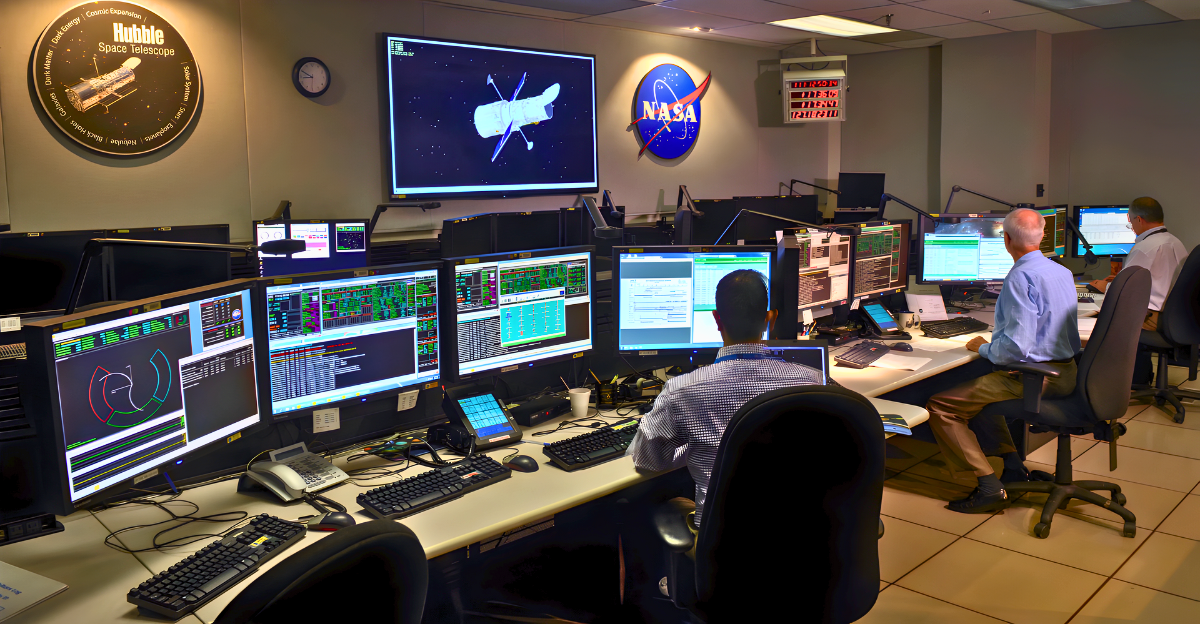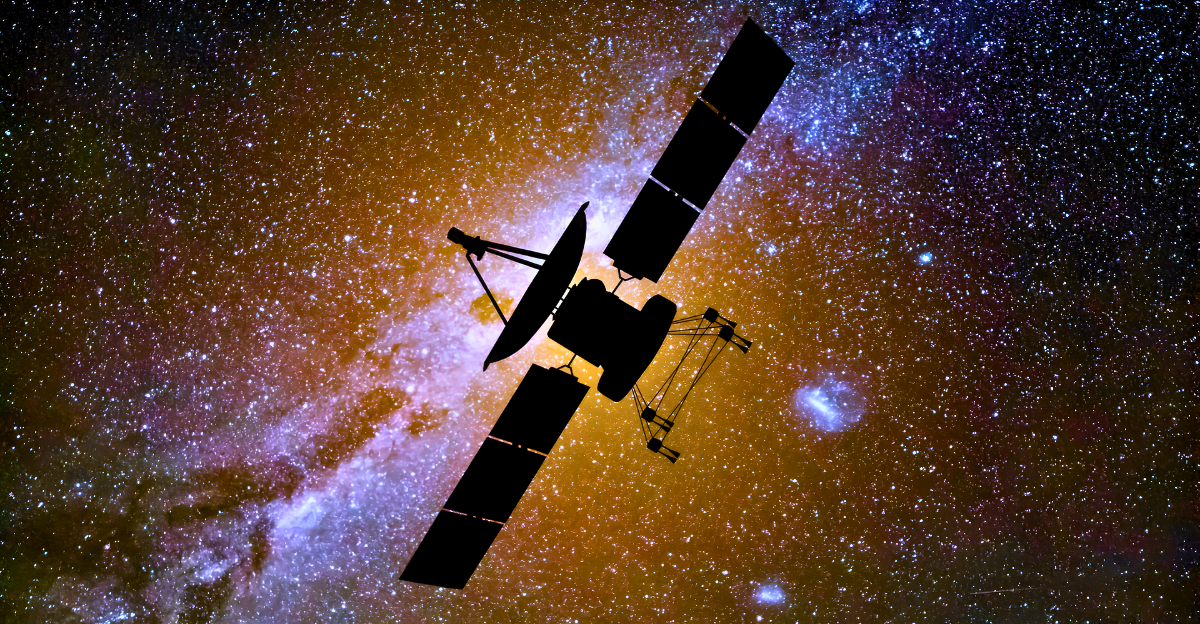
1977 NASA launched the Voyager 1 and Voyager 2 probes to explore the outer planets and beyond. Decades later, these spacecraft have reached the solar system’s outermost boundary, revealing a startling discovery: a superheated region with temperatures soaring up to 50,000 Kelvin (about 50,000°C) at the edge of our solar system. This “wall of fire” challenges previous notions about where and how the solar system ends.
The discovery reshapes scientific understanding of the heliosphere, the protective bubble the solar wind forms, and its interaction with interstellar space. Voyager’s data provide an unprecedented glimpse into this dynamic frontier, advancing knowledge of space physics and the cosmic environment surrounding our solar neighborhood. This breakthrough redefines the solar system’s boundary and informs future space exploration missions venturing into deep space.
Defining the Solar System’s Edge: The Heliopause

The solar system is enveloped by the heliosphere, a vast bubble created by the continuous flow of charged particles from the Sun known as the solar wind. The heliopause marks the outer boundary of this bubble, where the solar wind’s outward pressure balances the interstellar medium’s incoming pressure, the thin gas and plasma that fill the space between stars.
This boundary is crucial because it represents the transition zone between the Sun’s influence and the broader galaxy. Understanding the heliopause helps scientists comprehend how solar and interstellar environments interact, affecting cosmic ray propagation and the shielding of planets within the solar system.
The Voyager Missions: Journey to the Solar System’s Edge

Voyager 1 and 2 were launched in 1977 to study the outer planets. After completing their planetary missions, they continued outward to explore the solar system’s boundary. Voyager 1 crossed the heliopause in 2012, becoming the first human-made object to enter interstellar space, followed by Voyager 2 in 2018.
Their instruments have provided critical data to locate and characterize this boundary, revealing unexpected phenomena such as slowed solar wind speeds and complex magnetic field interactions. These findings have been instrumental in mapping the solar system’s limits and understanding interstellar space’s nature.
Discovery of the “Wall of Fire” – Extreme Temperatures at the Heliopause

The Voyager probes detected a surprising temperature spike at the heliopause, with plasma temperatures ranging from 30,000 to 50,000 Kelvin. This superheated region dubbed the “wall of fire,” is not a solid barrier but a thin shell of intensely hot, sparse plasma formed where solar wind particles collide with interstellar material.
Despite the extreme heat, the low particle density means the probes can survive passing through this zone. This discovery reveals a previously unknown layer at the solar system’s edge, reshaping our understanding of the heliosphere’s structure and the conditions spacecraft encounter as they venture into deep space.
The Physics Behind the Wall: Solar Wind Meets Interstellar Medium

The “wall of fire” forms where the charged particles of the Sun’s solar wind meet the cold, slow-moving particles of the interstellar medium. This collision creates a bow shock, similar to the bow wave formed by a ship moving through water. The interaction heats the plasma to extreme temperatures, producing the superheated boundary observed by Voyager.
This dynamic collision zone is a complex interface where magnetic fields and charged particles interact, generating turbulence and heating that challenge previous models of the heliosphere’s edge.
Implications for Space Physics and Astrophysics

Voyager’s discovery of the superheated plasma wall offers new insights into the heliosphere’s structure and boundary dynamics. It impacts models of cosmic ray shielding, as the heliopause acts as a protective barrier against high-energy radiation from the galaxy. The findings also intersect with plasma physics and magnetic field studies, revealing a more intricate and variable solar boundary than previously thought.
This knowledge is vital for understanding how the Sun influences interstellar space and for planning future missions that must navigate or study these extreme environments.
Contrarian Views and Surprises in the Data

Despite the extreme temperatures, the “wall of fire” is not a solid or fixed boundary but a dynamic, fluctuating region. Voyager data show that the heliopause location varies with solar activity, expanding and contracting like a breathing lung. This variability challenges earlier assumptions that the solar system’s edge was a stable, well-defined boundary.
Additionally, magnetic field measurements revealed unexpected alignments, suggesting a closer connection between the heliosphere and the galaxy’s magnetic environment than previously understood, prompting a reevaluation of cosmic shielding mechanisms.
From Early Solar Exploration to Modern Discoveries

Humanity’s quest to explore the solar system’s boundaries began with early missions like Pioneer, which paved the way for the more advanced Voyager probes. Meanwhile, the Parker Solar Probe studies the Sun’s corona much closer to the star, complementing Voyager’s distant observations.
Together, these missions provide a comprehensive picture of solar phenomena from the Sun’s surface to the heliosphere’s edge. Voyager’s findings build on decades of exploration, marking a milestone in our understanding of the solar system’s extent and its interaction with the galaxy.
Extreme Examples and Future Exploration Prospects

The Parker Solar Probe has set records for the closest approaches to the Sun, enduring intense heat with its advanced heat shield technology. Looking ahead, NASA plans missions like the Interstellar Mapping and Acceleration Probe (IMAP), which will launch in 2026 to study heliopause in greater detail from within the heliosphere.
Understanding the solar boundary’s complexities is crucial for protecting future deep-space explorers from cosmic radiation and advancing interstellar travel technologies. These efforts continue the legacy of Voyager’s pioneering journey into the unknown.
Redefining Our Solar Neighborhood

Voyager’s discovery of the hot plasma “wall of fire” at the solar system’s edge marks a transformative moment in space exploration. The solar system’s boundary is now understood as a dynamic, complex region shaped by intense particle interactions and magnetic forces.
This evolving picture challenges prior models and expands our knowledge of the Sun’s influence in the galaxy. As Voyager continues its journey, it embodies human curiosity and the relentless pursuit of understanding our place in the cosmos, inspiring future generations to push the frontiers of space.







